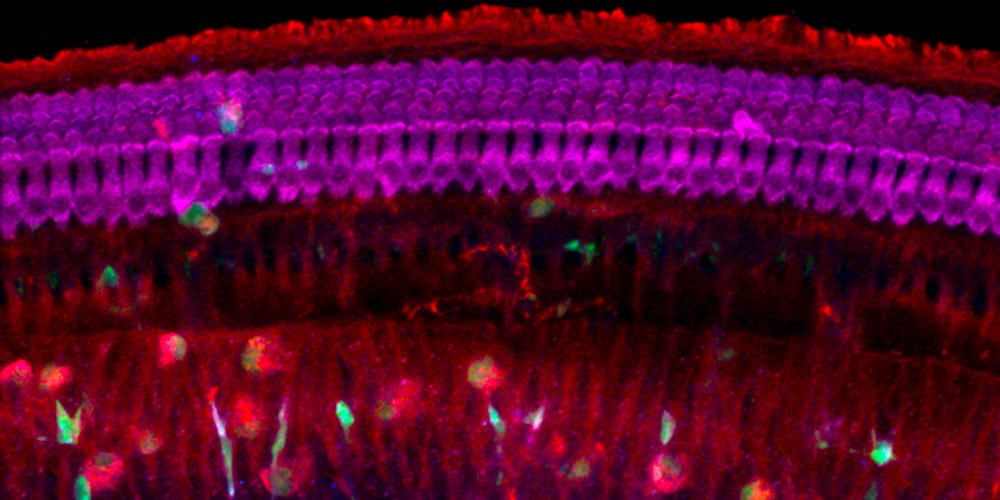Ten percent of newborns infected with cytomegalovirus suffer from hearing loss. Keiko Hirose, MD, in the Department of Otolaryngology at Washington University is trying to figure out why.
CMV or cytomegalovirus is a common viral infection in humans. It typically goes unnoticed and is only likely to cause problems when it occurs in infants or patients with weakened immune systems. When the virus is acquired prior to birth it is referred to as congenital CMV.
Congenital infection with human cytomegalovirus (HCMV) occurs in about one in 200 live births. A better understanding of the mechanisms underlying the damage that leads to hearing loss has been hampered by lack of a suitable animal model. That may be about to change.
Keiko Hirose, MD, professor of Otolaryngology and chief of Pediatric Otolaryngology has developed a mouse model of hearing loss associated with human CMV (HCMV ) infection early in auditory development that faithfully recapitulates phenotypes of hearing loss associated with congenital HCMV infection.
“The model takes advantage of several features in murine development,” said Dr. Hirose. “First, the newborn mouse is neurodevelopmentally and immunologically similar to a second trimester human fetus. Second, hearing in mice does not mature until approximately postnatal day 20.”
These features are important because it allows the mechanisms of CMV damage to be studied in the developing auditory system.
“Findings-to-date suggest that virus-induced inflammation and not direct damage to the inner ear by the virus infection is responsible for hearing loss,” said Hirose. “New insights into the mechanisms of disease provided by this model could point to new therapeutic approaches that might limit hearing loss in infants infected with HCMV.”
The current study is funded by the National Institutes of Health, and represents a collaboration between Hirose and co-investigators, William J. Britt, MD, at University of Alabama, Birmingham, and Stipan Jonjic, PhD, at the University of Rijeka in Croatia.
Hirose said the proposed studies hope to describe the nature and consequences of virus-induced inflammation in the inner ear; mechanisms of hematogenous virus spread to the inner ear; and the contribution of virus persistence to tissue damage and progressive hearing loss. These insights cannot be gained from observational studies in humans or in other animal models used previously.
